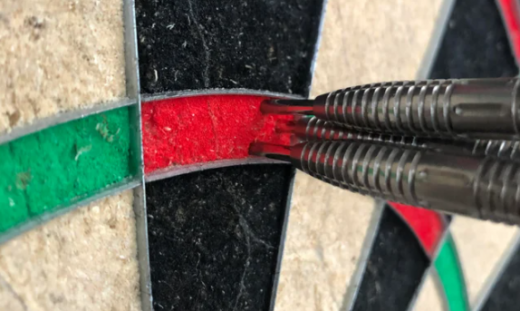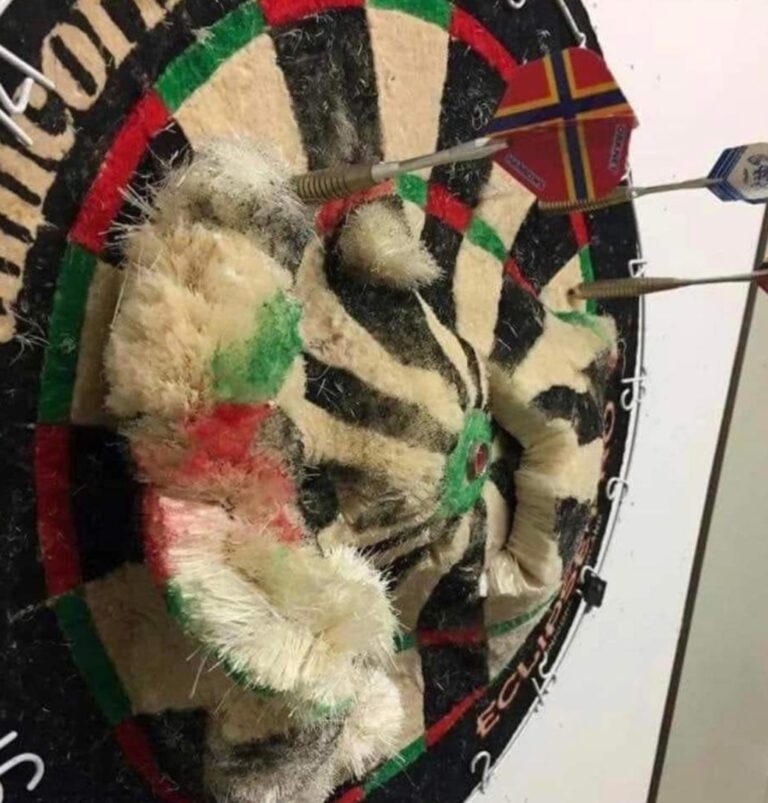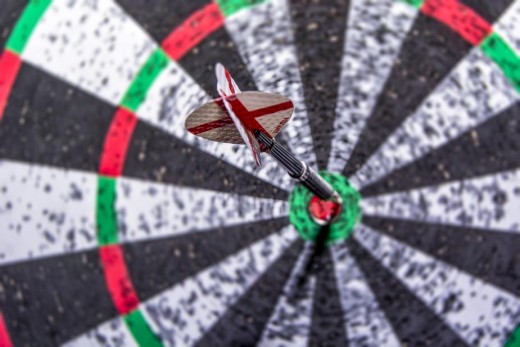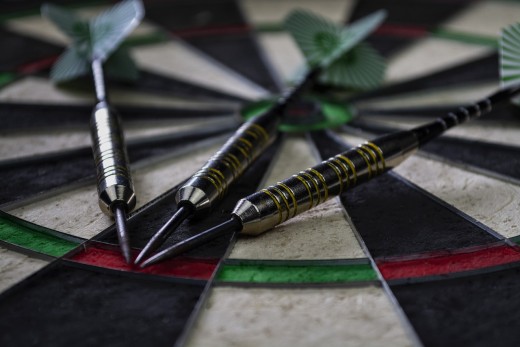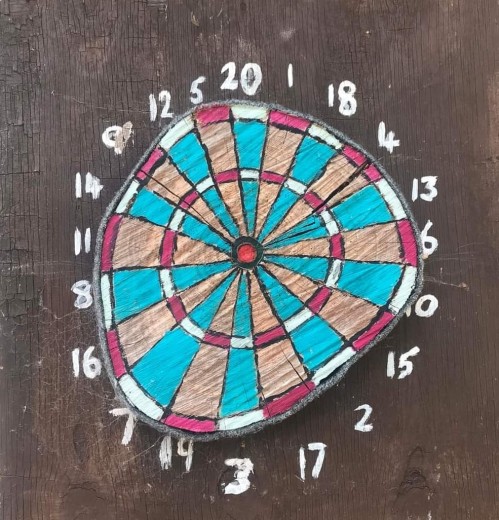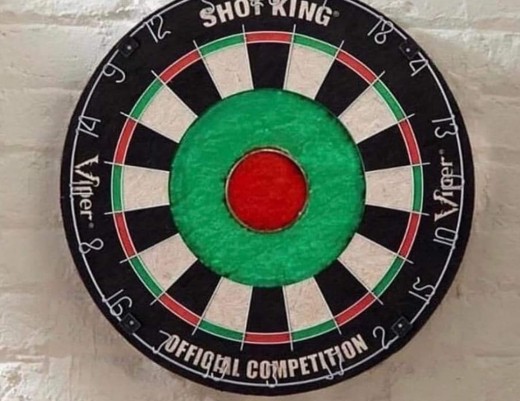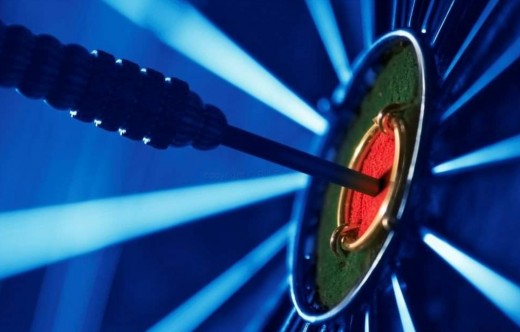Sunday, August 1, 2010
Column 394
Darts in Costa Rica
A recent Gallop World Poll ranked Costa Rica 6th among the World’s Happiest Counties. Costa Rica was topped only by Denmark, Finland, Norway and Sweden, which all racked up heavy points due to the “preponderance of long-legged blonds in Scandinavia,” and Holland, “because of, like, um, they’ve got killer weed, dude.” The poll’s fine print notes that Costa Rica’s numbers were aided by the fact that “McDonald’s DELIVERS!” but hurt because “machetes are as common as duct tape” and “there are absolutely no frickin’ street signs – or addresses – anywhere in the whole damn country.”
Just try finding your way to a darts bar!
Seriously, Costa Rica is a spectacular destination. More than two million people (half again as many as the entire Costa Rican population) visit the country annually. Zip-line thrill rides through the rainforest canopy, surfing in the pristine waters, active volcano watching, hiking through the lush jungle, whitewater rafting, bird watching, hot spring bathing, deep sea fishing, and more are like a magnet for tourists from far and wide. Of course, during my recent visit I blew off all this crap and did what I always do. I found my way to the nearest darts bar – Bar Mahos (Desamparados, Gravilias – Phone: 22-59-03-12) – and ordered a cold one, Costa Rica’s most popular, Imperial.
Getting anywhere in Tico Country is an experience and it is only thanks to a couple of new friends, Carla Ferraro and Davide Ulivieri, that I was fortunate to find Mahos – one of the premier darts bars in the capital city of San Jose. Ferraro and Ulivieri work for one of my clients – the McKee Project (McKee Project). Primarily by training veterinarians to perform a unique, quick, low cost (and safe) spay and neutering procedure to reduce the overpopulation of street dogs and cats, the McKee Project is dedicated to reversing the cycle of animal suffering throughout Latin America.
It is just as certain that without the input of Orlando Bonilla and translation assistance Tomás Poblador much of what follows about the history of darts in Costa Rica would have been impossible to share. Bonilla authors a blog about Costa Rican darts at Dardos Ticos. If you read Spanish, check it out.
Mahos is a super little darts bar – a dark and bona fide dive, absolutely perfect. Ferraro, Ulivieri and I arrived in the middle of the afternoon so, except for a couple of employees and a house cat named Penelope, the joint was quiet and the boards – all six of them on a wall in the back – were wide open.
 I threw for an hour or so, hoping that someone would show up to give me a game. No one did so after a few more beers and gathering what information I could, we hit the road. I left my e-mail address with one of the employees…
I threw for an hour or so, hoping that someone would show up to give me a game. No one did so after a few more beers and gathering what information I could, we hit the road. I left my e-mail address with one of the employees…
Within hours messages began to pile up in my mailbox.
It turns out that Mahos is just one of more than 30 bars that have boards and support teams in the San Jose metropolitan area. Throughout the country there are 150-plus establishments with organized play. In addition to Mahos, the most active bars in the San Jose area include Bar Nova Luna (Guadalupe – Phone: 22-34-80-07), Chayota (Phone: 88-19-49-79), Bar Boston (Barrio la Cruz), Kandora (Moravia), Esteras (Moravia, Parasito), Itabos (Escazú), Tuquitas (Sabanilla), Luna’s (Coronado), Bozales (Desamparados), Pia Pia (Coronado) and Barba Roja (Coronado), among others. Chances are good that on any Friday or Saturday night an out-of-town player can find a small luck of the draw in several of them. Unfortunately, none of them are near Juan Santamaria International Airport – but all are within an hour’s taxi ride, depending on traffic.
As in many countries, darts established roots in Coast Rica in the early 1970s during the first heyday of the sport. The Hotel Plaza, Gatos Bar, Amon, and G-Pub were the nucleus of activities – but conditions were poor, boards were inferior, and rules (even as to the height of the board and distance to the oche) were not standardized. Not surprisingly, the skill level was low and there were no organized tournaments. In these days the game of choice was Shanghai. The top players included Augusto Colombari and Jamie Polonia.
It was in the middle 1980s that the sport began to take off. In 1989, Alvaro Castro Gonzales was crowned champion at the first national tournament at Bar Sands. It wasn’t until 1993 that the next national tournament was held and William Rojas Zamora topped the field. This same year saw Elena de la Torre, take the first title for the ladies.
Thanks to the efforts of Armando Niehaus, in 1995 a ranking system was put in place which quickly served to motivate the players, improve the overall standard of play, and attract new blood. Healthy inter-bar rivalries developed, the number of tournament participants boomed, and teams from cities outside the Jan Jose area began to form (notably from Jaco in the Central Pacific and Golfito in the Southern Pacific). It was a mystery to many how, with a population of just over 6,000, Golfito’s players quickly became dominant, putting the San Jose faithful to shame.
A key date in history came in 1996 when the Costa Rican Darts Association (ACOA – Asociation Costarricense de Dardos) was founded by Alexander Granados and Armando Niehaus. On the heals of this development, the San Jose darts leadership set out to determine why – exactly how – the Golfito group with its limited population to draw from continued to be unbeatable. What they found was that while in San Jose the focus was on Shanghai and a form of cricket that gave no extra value to doubles and triples, in Golfito players had adopted 501 and American Cricket. It was a revelation. It was also the turning point in the quality of play nationwide.
In due course the Costa Rican version of cricket was eliminated and, along with 501, two other forms of cricket took hold. The first, called francesa (French) had been around a while – it is basically a long form of the game, similar to Mickey Mouse in Asia. The second, called cricket modalidad Americana, is simply American Cricket. I found French cricket to be popular at Mohas, with special boards set up to accommodate the scorekeeping.
This shift in play prompted a full-out explosion of the sport – which then, two short years later, nearly went bust. Similar to the William ‘Bigfoot’ Annakin case from 1908 in Leeds, West Yorkshire, the San Jose government reared its ugly head and tried to enforce an old 1932 law that prohibited bars that sell alcoholic beverages from offering games. Armando Niehaus was quick to step to the plate and after a two-year legal battle won the case in court and saved the future of darts in Costa Rica.
Niehaus continued to leave his mark during the early years of the new century, organizing all national events through 2003. Jean Pablo took over the reins in 2003. He was followed by Luis Rivera in 2004 (Rivera also once directed one of the best teams in the country, Los Halcones).
In 2006, Warren Vargas was elected the general coordinator to provide enhanced coordination and cooperation between the many bars and players. He initiated a new breed of inter-bar tournaments with consistent rules, formulated a calendar and set dates for all national tournaments.
Today darts in Costa Rica, as in most locations around the world, is a thriving subculture. Among many fine players, Orlando Leon, William Rojas Zamora, Felix Guerra, Spencer Cordero, Jerry Valerde, Felipe Wang, Walter Olivares, Joshua Varga and Juan Pablo are considered forces to be reckoned with among the men. They are joined, also among others, by Maria Isabel Sanchez, Yolanda Mendez, Aida Picado, Ana Navarro, Evelyn Campos, Ligia Zeledon, Marjorie Arauz and Maria Elena Jiminez for the ladies. Luis Rivera is widely recognized for his achievements in the electronic game outside of the country where in 1992 he placed well in tournaments in Las Vegas and Chicago.
Most recently (July 16-18), the 2010 national championship was held. The results can be found at Dardos Ticos.
So there you have it – darts is alive and well in Tico Land, just a little bit difficult to find.
Again, to everybody who helped research this brief history – notably Carla Ferraro, Davide Ulivieri, Orlando Bonilla and Tomás Poblador, thank you. I don’t speak or read Spanish so all of your help was as invaluable as it was appreciated.
I do have a favor to ask Bonilla and Poblador and everyone else whose name I have mentioned above…
But first, to the extent there may be spelling errors, errors of fact, errors of omission, or any attempt at humor which comes off as offensive rather than funny: to anyone affected please accept my apology. Or as you say in Spanish: Coma mierda! (At least this is what an old girlfriend used to say when she apologized, many times a day.)
The favor? I understand that the Costa Rican darts community often pulls together to host a tournament to raise funds for a deserving charity. At Mahos I was given a DVD of an event that collected funds to help a child who needed a bone marrow transplant.
My hope is that you will consider establishing an annual tournament to benefit the McKee Project. They are good people and they do great work.
Hold it at Mahos and call it the Penelope the Cat Open.
Let me know the date and I’ll be back with my darts (and my machete) to take all of your money!
From the Field,
Dartoid

